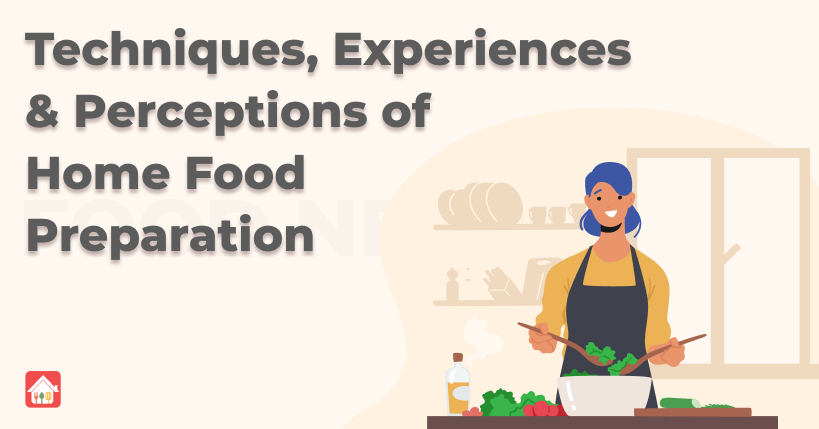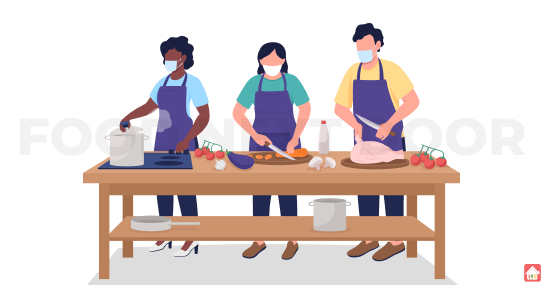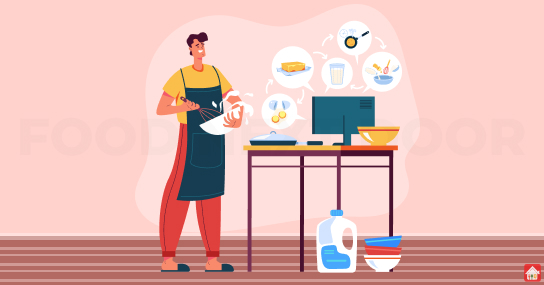Table of Contents
Food choices have a significant impact on one’s health. Diet and health benefits may be associated with food processing techniques. However, the elements that influence people’s food choices, as well as how food preparation experiences mould them, are still unknown. The goal of this study was to look into the behaviours, experiences, and perceptions of adults in North East England when it came to home meal preparation. Purposively sampling of subjects with various socio-demographic traits was done using a matrix. Photographic food diaries were created by participants and used as prompts during semi-structured interviews. As per the study of Susanna Mills, the framework method was used to analyse the data.
Home food preparation is complicated, with a wide range of behaviours, experiences, and perspectives among individuals as well as within the same individual through time, as priorities and circumstances change. The regional participant sample may restrict the generalizability of our findings, but the findings complement and expand on past studies. Interventions focusing on life transition times where goals and circumstances change, as well as careful targeting to boost personal motivation and social norms, could be successful in increasing home meal preparation.
Methodology
The COREQ consolidated criteria for reporting qualitative research were followed in this study. To learn more about how people prepare food at home, we conducted semi-structured interviews with photo-elicitation. The bulk of the interviews was one-on-one; however, three of the sessions included two other study participants, as requested by the participants. These individuals were all familiar with one another, had agreed to participate in the study, and contributed to the interview conversation.
Depending on the method of selection, interested parties either saw advertising materials and contacted the researcher to indicate their interest, or they reacted directly to the researcher after an in-person promotional presentation to a group. Participants were met on two occasions by SM, a female doctoral researcher with a background in public health and a medical doctorate. SM has previously had extensive training in qualitative research methodology and analysis.
The participant information sheet was reviewed and the participant was allowed to ask any remaining questions before signing the written consent form. Participants were instructed to capture photos, which they would then display and discuss during the interview. The researcher explained the procedure and requested that the participant email at least one digital photograph each day for a week. Participants were instructed to take pictures of all elements of food and eating at home, including grocery shopping, cooking and eating facilities, and mealtimes. Participants who did not have access to a smartphone capable of taking and sending photos were given a digital camera, and photos were uploaded and emailed via computer. Participants were encouraged to avoid taking identifying photos to retain their anonymity.
Cooking procedure
Many participants recognised that they were naturally drawn to food and cooking and enjoyed the activity, whereas others were disinterested and disliked it to varying degrees. Personal interest in food and cookery seemed to persist a long time in many cases. However, as new jobs or influences became important in their lives, several people reported fluctuating levels of interest and engagement.
A few participants stated that television programmes inspired them to cook; yet, others stated that individuals who prepared food the least regularly in their household were also the most likely to enjoy watching culinary shows. Participants typically mentioned learning to cook from others, usually families. Cooking was also utilised to help people bond with their families or friends.
Participants’ claimed culinary skills ranged from little practical aptitude to the ability to produce sophisticated meals totally from scratch. Participants who were enthusiastic about cooking looked for opportunities to enhance their skills and were willing to accept culinary failures along the way, whereas those who were less enthusiastic saw their lack of talent as a substantial impediment. Higher levels of ability were frequently linked to higher levels of confidence when it came to cooking. However, expectations linked with sharing meals influenced confidence, with variations in the perceived different standards required for making food for oneself, spouse or family, visitors, and formal events.
Situational factors play an important role
Participants regularly mentioned how their mood, vitality, and enthusiasm at any given time influenced their home meal preparation behaviour. Preparing sophisticated, time-consuming meals, for example, was more typical on weekends than during the week, because participants were often stressed and fatigued after a long day at work.
A key situational driver was sharing meals and making them for others, with the amounts of a compromise reached varying between participants. When it came to meal preparation, some participants cooked meals more quickly or to fit in with the schedules of others, such as by utilising pre-processed items rather than cooking from scratch, while others decided to dine separately. When it came to balancing food preferences, some participants saw them as set parameters, making different dishes or meal modifications based on the household’s likes and dislikes. Others took a more pragmatic approach to the situation.
Outcomes
Interviews with 18 persons (five men and thirteen women) ranging in age from 20 to 80 years were done until data saturation was reached. The practices ranged from a total reliance on pre-prepared foods to often preparing sophisticated dinners using only basic items. Identity (e.g., roles), the cooking process (e.g., skills), and situational drivers emerged as key themes (eg, necessity). In terms of time, money, and facilities, resources had an impact on home cooking behaviour. The cooking habits of participants often represented compromises between a variety of competing needs and life issues. Personal motives to cook, as well as the effect of others on cooking experiences and views, were significant factors. Most people seemed overall to be content with their home cooking behaviour, although they ideally aspired to cook more often and more extensively from basic.
Projection
The geographic participant sample may limit the results’ transferability. Focusing interventions on life-transition points where priorities and circumstances change could be a good way to encourage people to cook at home. To avoid complacency regarding changes in home cooking behaviour, interventions should be carefully targeted to increase personal motivation and societal norms.
Conclusions
We discovered the impact of both personal motivation and the influence of others in a study that looked at home food preparation behaviours, experiences, and views. Identity, the cooking process, situational factors, and resources emerged as key topics. The way people prepared food at home was frequently a balancing act between several competing influences and demands in their lives. Overall, respondents were pleased with their culinary compromises; nevertheless, several expressed a desire to cook at home more frequently under perfect settings, using simple ingredients. Individual cooking styles differed widely, and within the same individual, cooking styles altered over time in response to shifting priorities and circumstances. These life transition points might be good places to offer support and interventions to encourage people to prepare food at home. To avoid ambivalence about behavioural changes, interventions should be aimed at boosting personal drive and a shift in social norms. Longitudinal research studies are also required to assist demonstrate causal relationships between the factors and consequences of home cooking across time.







